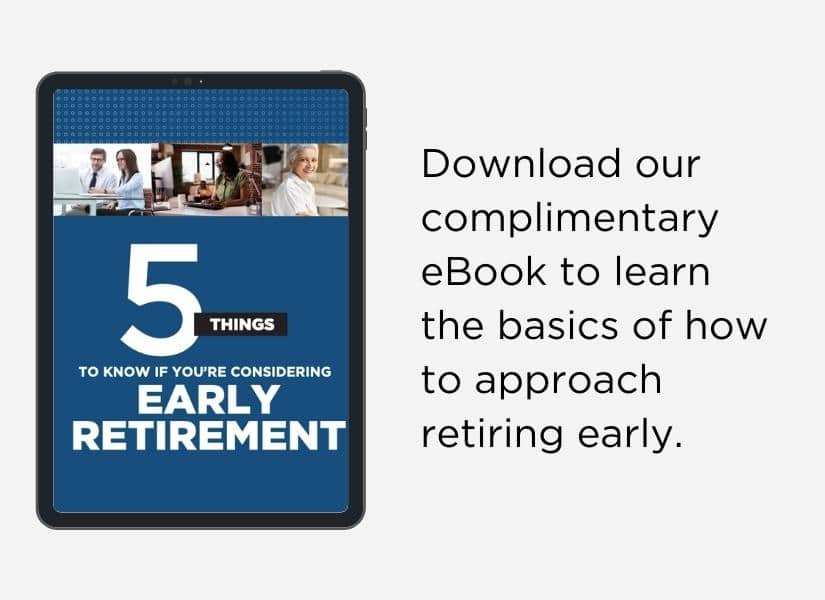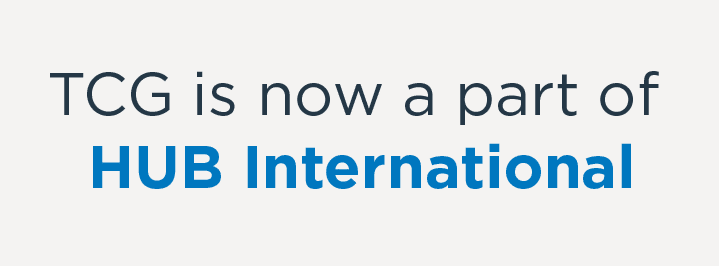What does financial wellness have to do with school staff retention? Everything.

BY MASON MOSES, SENIOR VICE PRESIDENT
As someone who grew up in a family of educators, served on my local school board, and now as Senior Vice President of a firm that provides financial services for public schools, I have an acute sense of where this problem stems from — and what districts can do about it.
%
And this trend goes well beyond in-classroom staff. According to a recent report, one school district in central Texas saw a 34 percent increase in resignations from support positions, like bus drivers, custodians, and food workers.2
In other words, the worse it gets, the worse it gets — not only for schools, but for teachers, other district staff, the entire public education system, the economy — and especially for students.3-11
What’s causing school staff attrition?
Many factors are fueling this shortage. An increasingly tough school environment, intensified by political polarization. Lack of training, support, and professional development. And, of course, low pay.
It’s no secret that public education is one of the most underpaid sectors. Yet teachers and other district staff enter the field anyway because they feel called to support and educate the next generation. No one dreams of getting rich in this role — but they also don’t expect to endure the chaos brought on by a global pandemic for such low pay.
%
Financial stress even takes a toll on students when teachers stay in their positions. PwC found that 30 percent of workers are distracted by their finances at work.12 In a district with 1,000 teachers and an average class size of 20, this equates to 300 distracted educators impacting at least 6,000 students — all while schools are already struggling to address COVID-induced learning gaps.
But with wages set by districts, administrators need to find other ways to promote financial security, increase overall job satisfaction, and entice more candidates to enter the education sector in the first place.
That’s where financial wellness programs come in
When I served on my local school board, we worked with the superintendent to ensure the supports we provided would help keep teachers in the classroom. After all, it was our responsibility to help administrators attract and retain quality staff that met our community’s high expectations. So, I know that wages themselves aren’t the sole indicator of employee satisfaction — or financial health.
While the vast majority of employers surveyed offered retirement savings plans (95 percent) and safety net insurance (89 percent), far fewer provided financial planning for long-term security (35 percent) or personal financial coaching (24 percent).15
It’s in this area that school districts can truly stand out and show staff they care.
In fact, research shows there’s a strong relationship between financial wellness and workplace satisfaction — one that may translate to employee fulfillment.16-18 Equipping school staff with more financial education tools can help to improve retention by:
- Empowering staff to take more control of their finances
- Easing financial uncertainty to reduce stress and support better quality of life
- Showing administrators are invested in staff wellbeing, increasing loyalty
- Keeping staff more focused, engaged, and productive, which can help to boost personal gratification and overall satisfaction
But K-12 administrators are already stretched thin and can’t possibly become experts at all things related to financial education. Instead, school district leaders can partner with an honest retirement plan and financial education provider to truly support their staff.
Growing up, I saw firsthand the concerns that impact school personnel and their families. And while we may not be able to eliminate the anxiety caused by standardized testing, the political environment, or the constant concern they have for their students, we can — and should — do more to reduce the financial stress that too many educators carry each day.
Where some K-12 retirement plan and financial education providers get it wrong
While teachers often feel their compensation is too low and/or their debt too high to contribute to a retirement or long-term savings plan, studies show employer-sponsored financial education can change that.19
Unfortunately, many K-12 financial services providers across the U.S. aren’t doing enough to help districts realize the potential benefits of these solutions.
Here are some common pitfalls to watch out for20:
- Non-fiduciary providers who only focus on selling high-cost investment products that aren’t necessarily in participants’ best interests
- Failure to provide relevant financial education targeted to different K-12 employee groups
- Lack of focus on overall, holistic financial wellness rather than one-off solutions, such as retirement
- Inflexible “9-to-5” communication channels that don’t fit into K-12 educators’ hectic schedules
- Providers who only cater to those with high income, job status, or earning potential
- Insufficient understanding of the unique pension systems available to K-12 educators or the complexities of related Social Security provisions
The TCG approach
As a fiduciary, TCG has a legal and ethical obligation to look out for the best interests of our clients. That’s why employee education is at the core of everything we do. Our team of advisors, customer service representatives, and account managers are there every step of the way to ensure plan sponsors and employees have what they need to succeed.
Our proven approach is built on five key pillars:
Education First
Inclusion
Regular, Digestible Insights
Dialogue, Not Just Monologue
1:1 Support, Anytime They Need It
We’re here to help.
Ready to strengthen your K-12 organization and promote student and educator success? Get in touch with our team to learn more about leveraging financial education tools to better attract, recruit, and retain staff.

Written by Mason Moses
Vice President, Head of Consulting
At TCG Advisory Services, LLC, a HUB International company (TCG), Mason Moses specializes in working with both public and private organizations and their executive leadership to assist them in attracting and retaining highly competent leaders. Additionally, Mason focuses on helping individuals lead a healthier financial life by mapping out strategies and actionable financial plans to meet their specific goals.
Mason holds a Bachelor’s degree in Communications and Business from Texas Tech University, and a Master’s degree in Public Policy from Texas A&M University. Before joining TCG Advisors in 2015, Mason worked in the public sector in both the public school system and the Texas Senate. Mason is a frequent presenter at conferences across the country on the topics of creative compensation, financial planning, and implementing healthy financial habits.
References:
- Leib Sutcher, Linda Darling-Hammond, and Desiree Carver-Thomas. A Coming Crisis in Teaching? Teacher Supply, Demand, and Shortages in the U.S., Learning Policy Institute, September 2016.
- Carroll, T.G. 2007. Policy Brief: The High Cost of Teacher Turnover. National Commission on Teaching and America’s Future.
- Carver-Thomas, Desiree, and Linda Darling-Hammond. 2017. Teacher Turnover: Why It Matters and What We Can Do About It. Learning Policy Institute, August 2017.
- Darling-Hammond, Linda. 1999. Teacher Quality and Student Achievement: A Review of State Policy Evidence. Center for the Study of Teaching and Policy, University of Washington, December 1999.
- Jackson, Kirabo, and Elias Bruegmann. 2009. “Teaching Students and Teaching Each Other: The Importance of Peer Learning for Teachers.” American Economic Journal Applied Economics 1, no. 4: 85–108.
- Kraft, Matthew A., and John P. Papay. 2014. “Can Professional Environments in Schools Promote Teacher Development? Explaining Heterogeneity in Returns to Teaching Experience,” Educational Evaluation and Policy Analysis 36, no. 4: 476–500.
- Ladd, Helen F., and Lucy C. Sorensen. 2016. “Returns to Teacher Experience: Student Achievement and Motivation in Middle School.” Education Finance and Policy 12, no. 2: 241–279.
- Learning Policy Institute. 2017. What’s the Cost of Teacher Turnover? (calculator). September 2017.
- Ronfeldt, Matthew, Susanna Loeb, and James Wyckoff. 2013. “How Teacher Turnover Harms Student Achievement.” American Educational Research Journal 50, no. 1: 4–36.
- Sorensen, Lucy C., and Helen Ladd. 2018. “The Hidden Costs of Teacher Turnover.” National Center for Analysis of Longitudinal Data in Education Research (CALDER) Working Paper No. 203-0918-1.
- “Employee Financial Wellness Survey: 2020 COVID-19 Update.” PWC.com. May 2020.
- “Financial Wellness Guide 2019.” SalaryFinance.com.
- https://direct.mit.edu/edfp/article-abstract/15/2/332/65045/The-Consequences-of-Leaving-School-Early-The?redirectedFrom=fulltext https://cdn.theconversation.com/static_files/files/269/withinyear_efp_final.pdf?1536242239
- https://www.shrm.org/hr-today/trends-and-forecasting/research-and-surveys/Pages/Unlocking-the-Full-Potential-of-Financial-Wellness-Benefits.aspx
- Kim, J (2008) Workplace financial education. In: Xiao, JJ (ed.) Handbook of Consumer Finance Research. New York: Springer, pp.375–386.
- Kim, J, Sorhaindo, B, Garman, ET (2006) Relationship between financial stress and workplace absenteeism of credit counseling clients. Journal of Family and Economic Issues 27(3): 458–478.
- Prawitz, AD, Cohart, J (2014) Workplace financial education facilitates improvement in financial behaviors. Journal of Financial Counseling and Planning 25(1): 5–26.
- ING (2010) Most teachers lack a plan for their financial future. Available at: http://ing.us/about-ing/newsroom/press-releases/ing-study-most-teachers
- National survey of 1,203 state and local government employees, including 493 K-12 public school employees, conducted by MissionSquare Research Institute (formerly the Center for State and Local Government Excellence at ICMA-RC) and Greenwald Research
- https://portal.equitable.com/appentry/EDoxRedirect?node_id=A2020123100003
- https://www.kxan.com/investigations/some-school-districts-are-sanctioning-teachers-because-too-many-are-quitting-mid-school-year/

